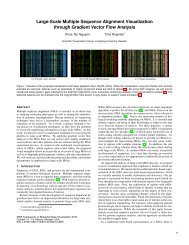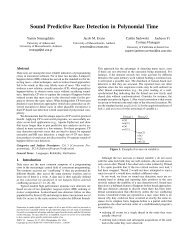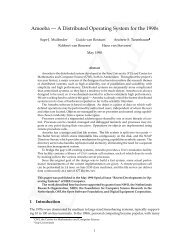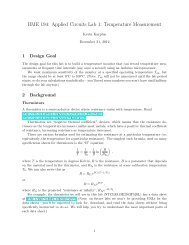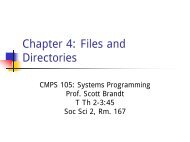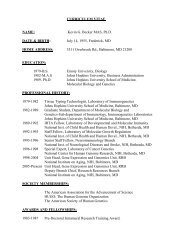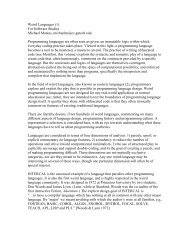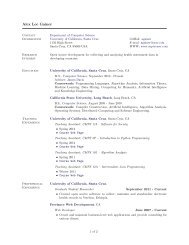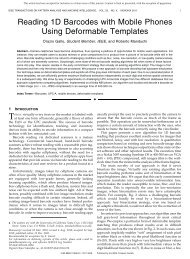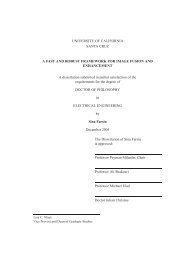Learning binary relations using weighted majority voting
Learning binary relations using weighted majority voting
Learning binary relations using weighted majority voting
You also want an ePaper? Increase the reach of your titles
YUMPU automatically turns print PDFs into web optimized ePapers that Google loves.
LEARNING BINARY RELATIONS 261<br />
depends on the total number of mistakes, #i, made by our algorithm when making a<br />
prediction for an entry in cluster i. Next we must determine the maximum amount by<br />
which the "noisy" entries of the submatrix S i cause the weights in gi to be "weakened"<br />
(i.e. multiplied by "7) instead of being "strengthened" (i.e. multiplied by (2- "7)) as<br />
desired. In Lemma 5 we show how Ji can be upper bounded in terms of 6i, the noise<br />
within cluster i. Finally in Lemma 7 we obtain an upper bound for the sum of the<br />
logarithms of the weights. We do this by observing that the total weight in the system<br />
never increases and then use the convexity of the logarithm function. The proof of<br />
our main theorem essentially combines all the lemmas and uses an additional convexity<br />
argument for combining the contributions from all clusters.<br />
We now obtain a lower bound for Fi. In order to obtain this lower bound, it is crucial<br />
to first obtain an upper bound on the number of mistakes for a given cluster and given<br />
force. This quantity characterizes the rate at which the <strong>weighted</strong>-<strong>majority</strong> nodes are<br />
gaining information.<br />
LEMMA 3 For each cluster r and force f there are at most m mistakes of force f.<br />
Proof: We use a proof by contradiction. Suppose that for cluster i the learner makes<br />
m + 1 force f mistakes. Then there must be two mistakes that occur for the same<br />
column. Suppose the first of these mistakes occurs when predicting Mrj and the second<br />
occurs when predicting M«j where both rows r and r' are in cluster i. However,<br />
after making a force f mistake when predicting Mrj that entry is known and thus the<br />
force of the M«j mistake taust be at least f + 1 giving the desired contradiction.<br />
We now compute a lower bound for the force of the mistakes made when predicting<br />
entries in cluster i.<br />
LEMMA 4 For any 1 < i < kp,<br />
Fi>max #i-m, 2m 2 "<br />
Proof: We proceed by showing that both expressions above are lower bounds for Fi.<br />
Ler {x) ~ denote a sequence containing the symbol x repeated m times. Let ~ri denote<br />
the sum of the first #i elements of the sequence (0)~(1)~(2) ~.. -. From Lemma 3 it<br />
follows that Fi _> cri. Thus, clearly our first lower bound<br />
Fi > #i - m<br />
follows since all but m mistakes have force at least one.<br />
We now compute a more sophisticated lower bound on cri. Ler s(x) z<br />
= ~~:~ k =<br />
z(~+l) Using the structure illustrated in Figure 5 it is easily seen that<br />
2 "<br />
F{ > m s([~] -1)- (m[~]-#O (U~] -I)




